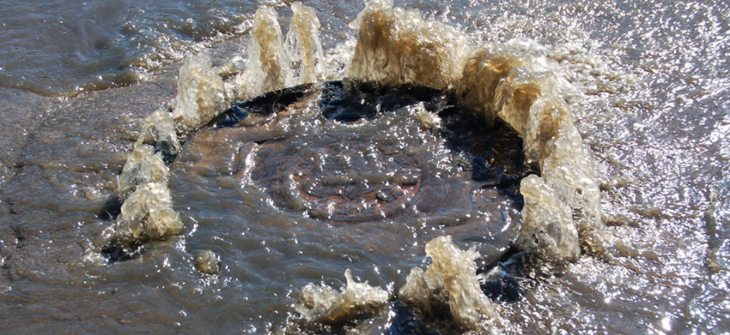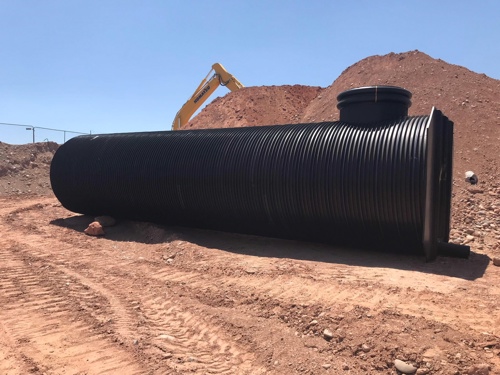
Overflowing
Imagine this: You’re hosting a dinner party at your home, and suddenly you notice water in the hallway. Oh, crap! The toilet is overflowing. Now imagine this occurring on a much larger scale when the city’s sanitary sewer system overflows and starts bubbling out of manholes into your backyard. The EPA estimates there are at least 45,000 sanitary sewer overflows (SSOs) each year in the U.S. To clarify, this is a situation in which raw sewage is discharged from a sanitary system into the environment prior to reaching a treatment facility. There can be several causes for such an event, including:
- Issues with the sanitary conveyance system such as blockages, undersized pipelines, and/or broken pipes.
- Infiltration and inflow.
- Pump station problems and malfunctions.
Infiltration and inflow (I&I) is when excess effluent enters the sanitary conveyance system and can inundate it to the point of overflow. More specifically, infiltration is defined as groundwater which enters the sanitary system through breaks, joint failures, connection gaps and other openings, while inflow is surface runoff primarily from rain events or snow melts which can enter the system through roof drains, manhole covers, and cross-connected storm drains. Blockages and diameter constraints can be assessed and corrected through regular inspection and maintenance practices, but many municipalities today are understaffed, underequipped and under budgeted to inspect, repair, and/or replace such vast wastewater pipe systems.
In some parts of the country, combined sewer systems (CSS) are used to collect sanitary wastewater, industrial runoff, and storm water into the same pipe system. Under normal conditions, these systems transport the effluent to a wastewater treatment facility; however, during heavy rain events they can reach capacity and overflow into streams and rivers. These types of systems are a concern for nearly 860 municipalities across the U.S. The discharge of sanitary and combined sewer overflows (SSOs & CSOs) can include hazardous pathogens, pollutants, toxic chemicals, suspended solids and smelly floatable matter.
The harmful impacts are numerous, including (but not limited to):
- Impairment of fish and other aquatic life.
- Compromising drinking water sources.
- Beach closures and pollution of water bodies.

One solution for these environmentally hazardous overflows is to install a traffic rated subsurface expansion tank made from DuroMaxx® steel reinforced polyethylene (SRPE). The capacity of these tanks can range from a few thousand gallons to multiple millions of gallons and are designed to capture excess peak flows during a storm event. After the storm event subsides and flows return to normal levels, the tank(s) can be drained, flushed, or pumped back into the conveyance system to be treated at the WWTP. The SRPE tanks can be installed at a pump or lift station as well as adjacent to the collection system prior to reaching the treatment facility. Diameters range from 30” to 120” and the layout footprint can be customized for the site. DuroMaxx® SSO/CSO tanks can provide a cost effective solution to upsizing the existing sewer collection system and are competitive with other materials such as lined concrete vaults or fiberglass tanks. What a great way for cities to overcome EPA consent decrees by containing hazardous peak overflows during the next big rain event… or during your next big dinner party.
